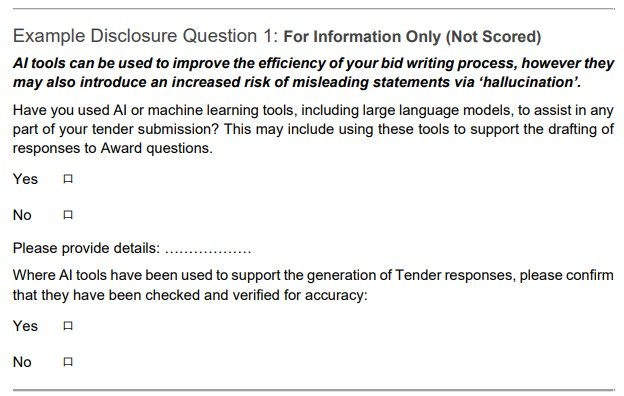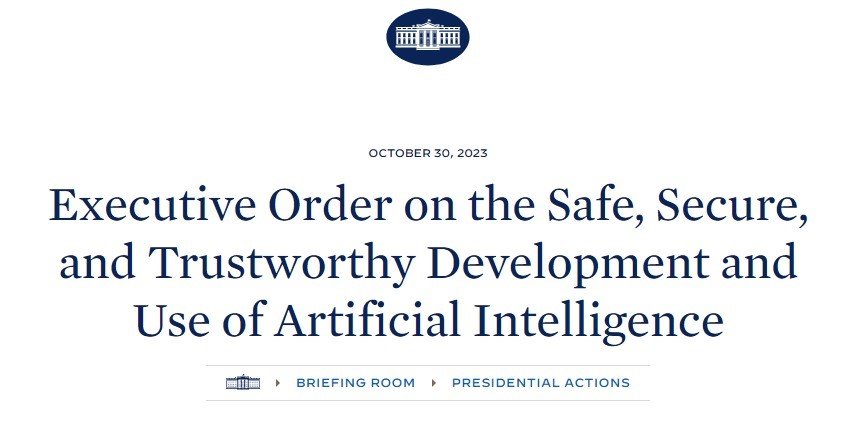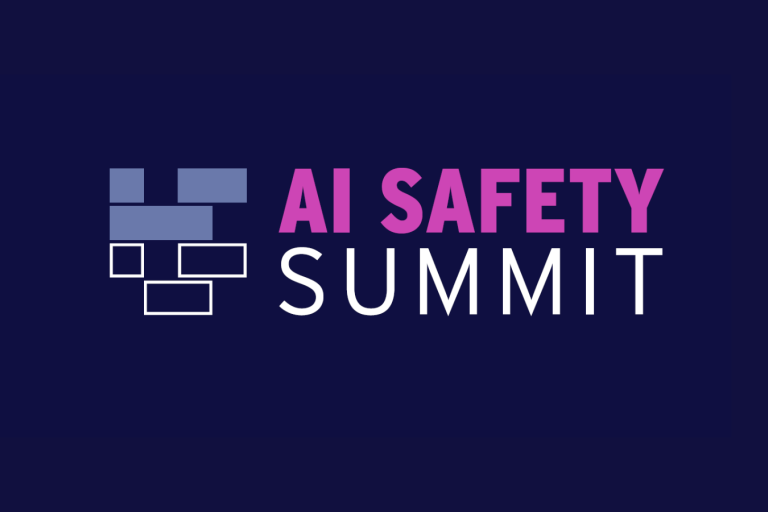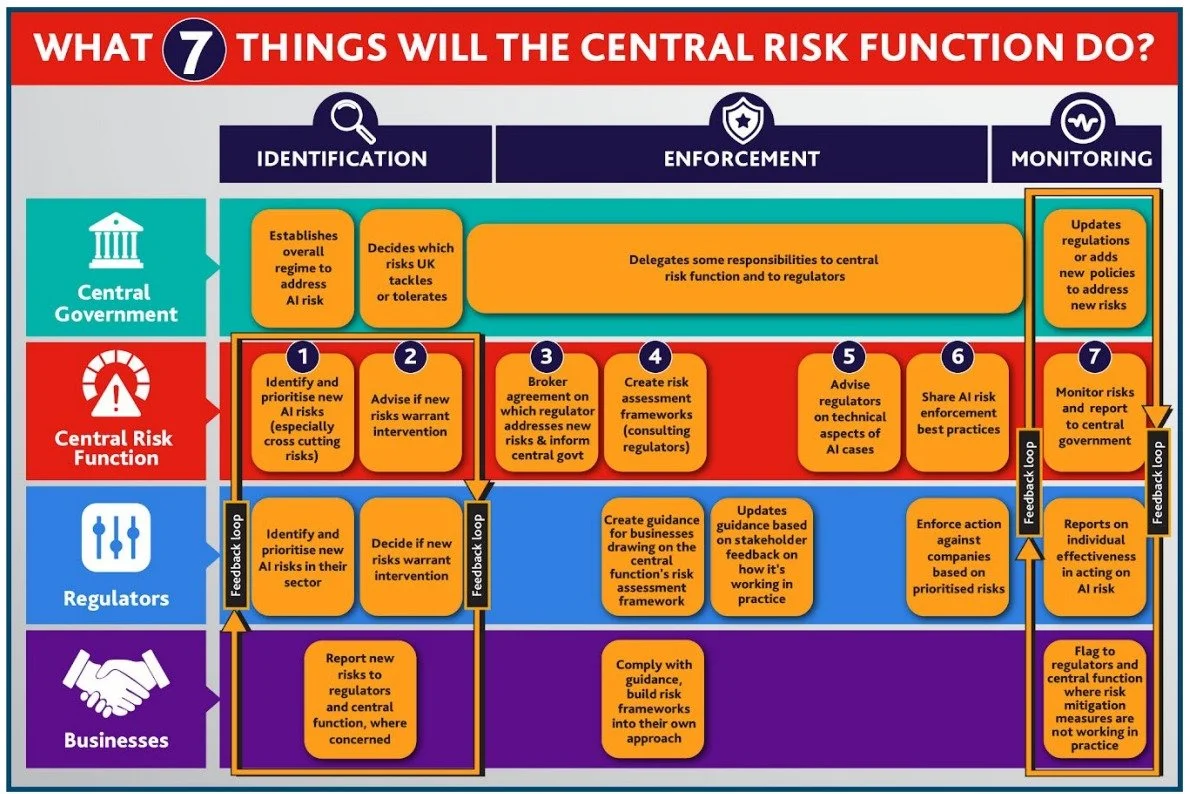The Algorithmic Transparency Standard (ATS) is one of the UK’s flagship initiatives for the regulation of public sector use of artificial intelligence (AI). The ATS encourages (but does not mandate) public sector entities to fill in a template to provide information about the algorithmic tools they use, and why they use them [see e.g. Kingsman et al (2022) for an accessible overview].
The ATS is currently being piloted, and has so far resulted in the publication of four disclosures relating to the use of algorithms in different parts of the UK’s public sector. In this post, I offer some thoughts based on these initial four disclosures, in particular from the perspective of the usability of the ATS in facilitating an enhanced understanding of AI use cases, and accountability for those.
The first four disclosed AI use cases
The ATS pilot has so far published information in two batches (on 1 June and 6 July 2022), comprising the following four AI use cases:
Within Cabinet Office, the GOV.UK Data Labs team piloted the ATS for their Related Links tool; a recommendation engine built to aid navigation of GOV.UK (the primary UK central government website) by providing relevant onward journeys from a content page, with the aim of helping users find useful information and content, aiding navigation.
In the Department for Health and Social Care and NHS Digital, the QCovid team piloted the ATS with a COVID-19 clinical tool used to predict how at risk individuals might be from COVID-19. The tool was developed for use by clinicians in support of conversations with patients about personal risk, and it uses algorithms to combine a number of factors such as age, sex, ethnicity, height and weight (to calculate BMI), and specific health conditions and treatments in order to estimate the combined risk of catching coronavirus and being hospitalised or catching coronavirus and dying. Importantly, “The original version of the QCovid algorithms were also used as part of the Population Risk Assessment to add patients to the Shielded Patient List in February 2021. These patients were advised to shield at that time were provided support for doing so, and were prioritised for COVID-19 vaccination.”
The Information Commissioner's Office has piloted the ATS with its Registration Inbox AI, which uses a machine learning algorithm to categorise emails sent to the Information Commissioner's Office’s registration inbox and to send out an auto-reply where the algorithm “detects … a request about changing a business address. In cases where it detects this kind of request, the algorithm sends out an autoreply that directs the customer to a new online service and points out further information required to process a change request. Only emails with an 80% certainty of a change of address request will be sent an email containing the link to the change of address form.”
The Food Standards Agency piloted the ATS with its Food Hygiene Rating Scheme (FHRS) – AI, which is an algorithmic tool to help local authorities to prioritise inspections of food businesses based on their predicted food hygiene rating by predicting which establishments might be at a higher risk of non-compliance with food hygiene regulations. Importantly, the tool is of voluntary use and “it is not intended to replace the current approach to generate a FHRS score. The final score will always be the result of an inspection undertaken by [a local authority] officer.”
Harmless (?) use cases
At first glance, and on the basis of the implications of the outcome of the algorithmic recommendation, it would seem that the four use cases are relatively harmless, i.e..
If GOV.UK recommends links to content that is not relevant or helpful, the user may simply ignore them.
The outcome of the QCovid tool simply informs the GPs’ (or other clinicians’) assessment of the risk of their patients, and the GPs’ expertise should mediate any incorrect (either over-inclusive, or under-inclusive) assessments by the AI.
If the ICO sends an automatic email with information on how to change their business address to somebody that had submitted a different query, the receiver can simply ignore that email.
Incorrect or imperfect prioritisation of food businesses for inspection could result in the early inspection of a low-risk restaurant, or the late(r) inspection of a higher-risk restaurant, but this is already a risk implicit in allowing restaurants to open pending inspection; AI does not add risk.
However, this approach could be too simplistic or optimistic. It can be helpful to think about what could really happen if the AI got it wrong ‘in a disaster scenario’ based on possible user reactions (a useful approach promoted by the Data Hazards project). It seems to me that, on ‘worse case scenario’ thinking (and without seeking to be exhaustive):
If GOV.UK recommends content that is not helpful but is confusing, the user can either engage in red tape they did not need to complete (wasting both their time and public resources) or, worse, feel overwhelmed, confused or misled and abandon the administrative interaction they were initially seeking to complete. This can lead to exclusion from public services, and be particularly problematic if these situations can have a differential impact on different user groups.
There could be over-reliance on the QCovid algorithm by (too busy) GPs. This could lead to advising ‘as a matter of routine’ the taking of excessive precautions with significant potential impacts on the day to day lives of those affected—as was arguably the case for some of the citizens included in shielding categories in the earlier incarnation of the algorithm. Conversely, GPs that identified problems in the early use of the algorithm could simply ignore it, thus potentially losing the benefits of the algorithm in other cases where it could have been helpful—potentially leading to under-precaution by individuals that could have otherwise been better safeguarded.
Similarly to 1, the provision of irrelevant and potentially confusing information can lead to waste of resource (e.g. users seeking to change their business registration address because they wrongly think it is a requirement to process their query or, at a lower end of the scale, users having to read and consider information about an administrative process they have no interest in). Beyond that, the classification algorithm could generate loss of queries if there was no human check to verify that the AI classification was correct. If this check takes place anyway, the advantages of automating the sending of the initial email seem rather marginal.
Similar to 2, the incorrect prediction of risk can lead to misuse of resources in the carrying out of inspections by local authorities, potentially pushing down the list of restaurants pending inspection some that are high-risk and that could thus be seen their inspection repeatedly delayed. This could have important public health implications, at least for those citizens using the to be inspected restaurants for longer than they would otherwise have. Conversely, inaccurate prioritisations that did not seem to catch more ‘risky’ restaurants could also lead to local authorities abandoning its use. There is also a risk of profiling of certain types of businesses (and their owners), which could lead to victimisation if the tool was improperly used, or used in relation to restaurants that have been active for a longer period (eg to trigger fresh (re)inspections).
No AI application is thus entirely harmless. Of course, this is just a matter of theoretical speculation—as could also be speculated whether reduced engagement with the AI would generate a second tier negative effect, eg if ‘learning’ algorithms could not be revised and improved on the basis of ‘real-life’ feedback on whether their predictions were or not accurate.
I think that this sort of speculation offers a useful yardstick to assess the extent to which the ATS can be helpful and usable. I would argue that the ATS will be helpful to the extent that (a) it provides information susceptible of clarifying whether the relevant risks have been taken into account and properly mitigated or, failing that (b) it provides information that can be used to challenge the insufficiency of any underlying risk assessments or mitigation strategies. Ultimately, AI transparency is not an end in itself, but simply a means of increasing accountability—at least in the context of public sector AI adoption. And it is clear that any degree of transparency generated by the ATS will be an improvement on the current situation, but is the ATS really usable?
Finding out more on the basis of the ATS disclosures
To try to answer that general question on whether the ATS is usable and serves to facilitate increased accountability, I have read the four disclosures in full. Here is my summary/extracts of the relevant bits for each of them.
GOV.UK Related Links
Since May 2019, the tool has been using an algorithm called node2vec (machine learning algorithm that learns network node embeddings) to train a model on the last three weeks of user movement data (web analytics data). The benefits are described as “the tool … predicts related links for a page. These related links are helpful to users. They help users find the content they are looking for. They also help a user find tangentially related content to the page they are on; it’s a bit like when you are looking for a book in the library, you might find books that are relevant to you on adjacent shelves.“
The way the tool works is described in some more detail: “The tool updates links every three weeks and thus tracks changes in user behaviour.” “Every three weeks, the machine learning algorithm is trained using the last three weeks of analytics data and trains a model that outputs related links that are published, overwriting the existing links with new ones.” “The average click through rate for related links is about 5% of visits to a content page. For context, GOV.UK supports an average of 6 million visits per day (Jan 2022). True volumes are likely higher owing to analytics consent tracking. We only track users who consent to analytics cookies …”.
The decision process is fully automated, but there is “a way for publishers to add/amend or remove a link from the component. On average this happens two or three times a month.” “Humans have the capability to recommend changes to related links on a page. There is a process for links to be amended manually and these changes can persist. These human expert generated links are preferred to those generated by the model and will persist.” Moreover, “GOV.UK has a feedback link, “report a problem with this page”, on every page which allows users to flag incorrect links or links they disagree with.” The tool was subjected to a Data Protection Impact Assessment (DPIA), but no other impact assessments (IAs) are listed.
When it comes to risk identification and mitigation, the disclosure indicates: “A recommendation engine can produce links that could be deemed wrong, useless or insensitive by users (e.g. links that point users towards pages that discuss air accidents).” and that, as mitigation: “We added pages to a deny list that might not be useful for a user (such as the homepage) or might be deemed insensitive (e.g. air accident reports). We also enabled publishers or anyone with access to the tagging system to add/amend or remove links. GOV.UK users can also report problems through the feedback mechanisms on GOV.UK.“
Overall, then, the risk I had identified is only superficially identified, in that the ATS disclosure does not show awareness of the potential differing implications of incorrect or useless recommendations across the spectrum. The narrative equating the recommendations to browsing the shelves of a library is quite suggestive in that regard, as is the fact that the quality controls are rather limited.
Indeed, it seems that the quality control mechanisms require a high level of effort by every publisher, as they need to check every three weeks whether the (new) related links appearing in each of the pages they publish are relevant and unproblematic. This seems to have reversed the functional balance of convenience. Before the implementation of the tool, only approximately 2,000 out of 600,000 pieces of content on GOV.UK had related links, as they had to be created manually (and thus, hopefully, were relevant, if not necessarily unproblematic). Now, almost all pages have up to five related content suggestions, but only two or three out of 600,000 pages see their links manually amended per month. A question arises whether this extremely low rate of manual intervention is reflective of the high quality of the system, or the reverse evidence of lack of resource to quality-assure websites that previously prevented 98% of pages from having this type of related information.
However, despite the queries as to the desirability of the AI implementation as described, the ATS disclosure is in itself useful because it allows the type of analysis above and, in case someone considers the situation unsatisfactory or would like to prove it further, there are is a clear gateway to (try to) engage the entity responsible for this AI deployment.
QCovid algorithm
The algorithm was developed at the onset of the Covid-19 pandemic to drive government decisions on which citizens to advise to shield, support during shielding, and prioritise for vaccination rollout. Since the end of the shielding period, the tool has been modified. “The clinical tool for clinicians is intended to support individual conversations with patients about risk. Originally, the goal was to help patients understand the reasons for being asked to shield and, where relevant, help them do so. Since the end of shielding requirements, it is hoped that better-informed conversations about risk will have supported patients to make appropriate decisions about personal risk, either protecting them from adverse health outcomes or to some extent alleviating concerns about re-engaging with society.”
“In essence, the tool creates a risk calculation based on scoring risk factors across a number of data fields pertaining to demographic, clinical and social patient information.“ “The factors incorporated in the model include age, ethnicity, level of deprivation, obesity, whether someone lived in residential care or was homeless, and a range of existing medical conditions, such as cardiovascular disease, diabetes, respiratory disease and cancer. For the latest clinical tool, separate versions of the QCOVID models were estimated for vaccinated and unvaccinated patients.”
It is difficult to assess how intensely the tool is (currently) used, although the ATS indicates that “In the period between 1st January 2022 and 31st March 2022, there were 2,180 completed assessments” and that “Assessment numbers often move with relative infection rate (e.g. higher infection rate leads to more usage of the tool).“ The ATS also stresses that “The use of the tool does not override any clinical decision making but is a supporting device in the decision making process.” “The tool promotes shared decision making with the patient and is an extra point of information to consider in the decision making process. The tool helps with risk/benefit analysis around decisions (e.g. recommendation to shield or take other precautionary measures).”
The impact assessment of this tool is driven by those mandated for medical devices. The description is thus rather technical and not very detailed, although the selected examples it includes do capture the possibility of somebody being misidentified “as meeting the threshold for higher risk”, as well as someone not having “an output generated from the COVID-19 Predictive Risk Model”. The ATS does stress that “As part of patient safety risk assessment, Hazardous scenarios are documented, yet haven’t occurred as suitable mitigation is introduced and implemented to alleviate the risk.” That mitigation largely seems to be that “The tool is designed for use by clinicians who are reminded to look through clinical guidance before using the tool.”
I think this case shows two things. First, that it is difficult to understand how different parts of the analysis fit together when a tool that has had two very different uses is the object of a single ATS disclosure. There seems to be a good argument for use case specific ATS disclosures, even if the underlying AI deployment is the same (or a closely related one), as the implications of different uses from a governance perspective also differ.
Second, that in the context of AI adoption for healthcare purposes, there is a dual barrier to accessing relevant (and understandable) information: the tech barrier and the medical barrier. While the ATS does something to reduce the former, the latter very much remains in place and perhaps turn the issue of trustworthiness of the AI to trustworthiness of the clinician, which is not necessarily entirely helpful (not only in this specific use case, but in many other one can imagine). In that regard, it seems that the usability of the ATS is partially limited, and more could be done to increase meaningful transparency through AI-specific IAs, perhaps as proposed by the Ada Lovelace Institute.
In this case, the ATS disclosure has also provided some valuable information, but arguably to a lesser extent than the previous case study.
ICO’s Registration Inbox AI
This is a tool that very much resembles other forms of email classification (e.g. spam filters), as “This algorithmic tool has been designed to inspect emails sent to the ICO’s registration inbox and send out autoreplies to requests made about changing addresses. The tool has not been designed to automatically change addresses on the requester’s behalf. The tool has not been designed to categorise other types of requests sent to the inbox.”
The disclosure indicates that “In a significant proportion of emails received, a simple redirection to an online service is all that is required. However, sifting these types of emails out would also require time if done by a human. The algorithm helps to sift out some of these types of emails that it can then automatically respond to. This enables greater capacity for [Data Protection] Fees Officers in the registration team, who can, consequently, spend more time on more complex requests.” “There is no manual intervention in the process - the links are provided to the customer in a fully automated manner.”
The tool has been in use since May 2021 and classifies approximately 23,000 emails a month.
When it comes to risk identification and mitigation, the ATS disclosure stresses that “The algorithmic tool does not make any decisions, but instead provides links in instances where it has calculated the customer has contacted the ICO about an address change, giving the customer the opportunity to self-serve.” Moreover, it indicates that there is “No need for review or appeal as no decision is being made. Incorrectly classified emails would receive the default response which is an acknowledgement.” It further stresses that “The classification scope is limited to a change of address and a generic response stating that we have received the customer’s request and that it will be processed within an estimated timeframe. Incorrectly classified emails would receive the default response which is an acknowledgement. This will not have an impact on personal data. Only emails with an 80% certainty of a change of address request will be sent an email containing the link to the change of address form.”
In my view, this disclosure does not entirely clarify the way the algorithm works (e.g. what happens to emails classified as having requested information on change of address? Are they ‘deleted’ from the backlog of emails requiring a (human) non-automated response?). However, it does provide sufficient information to further consolidate the questions arising from the general description. For example, it seems that the identification of risks is clearly partial in that there is not only a risk of someone asking for change of address information not automatically receiving it, but also a risk of those asking for other information receiving the wrong information. There is also no consideration of additional risks (as above), and the general description makes the claim of benefits doubtful if there has to be a manual check to verify adequate classification.
The ATS disclosure does not provide sufficient contact information for the owner of the AI (perhaps because they were contracted on limited after service terms…), although there is generic contact information for the ICO that could be used by someone that considered the situation unsatisfactory or would like to prove it further.
Food Hygiene Rating Scheme – AI
This tool is also based on machine learning to make predictions. “A machine learning framework called LightGBM was used to develop the FHRS AI model. This model was trained on data from three sources: internal Food Standards Agency (FSA) FHRS data, publicly available Census data from the 2011 census and open data from HERE API. Using this data, the model is trained to predict the food hygiene rating of an establishment awaiting its first inspection, as well as predicting whether the establishment is compliant or not.” “Utilising the service, the Environmental Health Officers (EHOs) are provided with the AI predictions, which are supplemented with their knowledge about the businesses in the area, to prioritise inspections and update their inspection plan.”
Regarding the justification for the development, the disclosure stresses that “the number of businesses classified as ‘Awaiting Inspection’ on the Food Hygiene Rating Scheme website has increased steadily since the beginning of the pandemic. This has been the key driver behind the development of the FHRS AI use case.” “The objective is to help local authorities become more efficient in managing the hygiene inspection workload in the post-pandemic environment of constrained resources and rapidly evolving business models.”
Interestingly, the disclosure states that the tool “has not been released to actual end users as yet and hence the maintenance schedule is something that cannot be determined at this point in time (June 2022). The Alpha pilot started at the beginning of April 2022, wherein the end users (the participating Local Authorities) have access to the FHRS AI service for use in their day-to-day workings. This section will be updated depending on the outcomes of the Alpha Pilot ...” It remains to be seen whether there will be future updates on the disclosure, but an error in copy-pasting in the ATS disclosure makes it contain the same paragraph but dated February 2022. This stresses the need to date and reference (eg v.1, v.2) the successive versions of the same disclosure, which does not seem to be a field of the current template, as well as to create a repository of earlier versions of the same disclosure.
The section on oversight stresses that “the system has been designed to provide decision support to Local Authorities. FSA has advised Local Authorities to never use this system in place of the current inspection regime or use it in isolation without further supporting information”. It also stresses that “Since there will be no change to the current inspection process by introducing the model, the existing appeal and review mechanisms will remain in place. Although the model is used for prioritisation purposes, it should not impact how the establishment is assessed during the inspection and therefore any challenges to a food hygiene rating would be made using the existing FHRS appeal mechanism.”
The disclosure also provides detailed information on IAs: “The different impact assessments conducted during the development of the use case were 1. Responsible AI Risk Assessment; 2. Stakeholder Impact Assessment; [and] 3. Privacy Impact Assessment.” Concerning the responsible AI risk assessment, in addition to a personal data issue that should belong in the DPIA, the disclosure reports three identified risks very much in line with the ones I had hinted at above: “2. Potential bias from the model (e.g. consistently scoring establishments of a certain type much lower, less accurate predictions); 3. Potential bias from inspectors seeing predicted food hygiene ratings and whether the system has classified the establishment as compliant or not. This may have an impact on how the organisation is perceived before receiving a full inspection; 4. With the use of AI/ML there is a chance of decision automation bias or automation distrust bias occurring. Essentially, this refers to a user being over or under reliant on the system leading to a degradation of human-reasoning.”
The disclosure presents related mitigation strategies as follows: “2. Integration of explainability and fairness related tooling during exploration and model development. These tools will also be integrated and monitored post-alpha testing to detect and mitigate potential biases from the system once fully operational; 3. Continuously reflect, act and justify sessions with business and technical subject matter experts throughout the delivery of the project, along with the use of the three impact assessments outlined earlier to identify, assess and manage project risks; 4. Development of usage guidance for local authorities specifically outlining how the service is expected to be used. This document also clearly states how the service should not be used, for example, the model outcome must not be the only indicator used when prioritising businesses for inspection.”
In this instance, the ATS disclosure is in itself useful because it allows the type of analysis above and, in case someone considers the situation unsatisfactory or would like to prove it further, there are is a clear gateway to (try to) engage the entity responsible for this AI deployment. It is also interesting to see that the disclosure specifies that the private provider was engaged “As well as [in] a development role [… to provide] Responsible AI consulting and delivery services, including the application of a parallel Responsible AI sprint to assess risk and impact, enable model explainability and assess fairness, using a variety of artefacts, processes and tools”. This is clearly reflected in the ATS disclosure and could be an example of good practice where organisations lack that in-house capability and/or outsource the development of the AI. Whether that role should fall with the developer, or should rather be separate to avoid organisational conflicts of interest is a discussion for another day.
Final thoughts
There seems to be a mixed picture on the usability of the ATS disclosures, with some of them not entirely providing (full) usability, or a clear pathway to engage with the specific entity in charge of the development of the algorithmic tool, specifically if it was an outsourced provider. In those cases, the public authority that has implemented the AI (even if not the owner of the project) will have to deal with any issues arising from the disclosure. There is also a mixed practice concerning linking to resources other than previously available (open) data (eg open source code, data sources), with only one project (GOV.UK) including them in the disclosures discussed above.
It will be interesting to see how this assessment scales up (to use a term) once disclosures increase in volume. There is clearly a research opportunity arising as soon as more ATS disclosures are published. As a hypothesis, I would submit that disclosure quality is likely to reduce with volume, as well as with the withdrawal of whichever support the pilot phase has meant for those participating institutions. Let’s see how that empirical issue can be assessed.
The other reflection I have to offer based on these first four disclosures is that there are points of information in the disclosures that can be useful, at least from an academic (and journalistic?) perspective, to assess the extent to which the public sector has the capabilities it needs to harness digital technologies (more on that soon in this blog).
The four reviewed disclosures show that there was one in-house development (GOV.UK), while the other ones were either procured (QCovid, which disclosure includes a redacted copy of the contract), or contracted out, perhaps even directly awarded (ICO email classifier FSA FHRS - AI). And there are some in between the line indications that some of the implementations may have been relatively randomly developed, unless there was strong pre-existing reliable statistical data (eg on information requests concerning change of business address). Which in itself triggers questions on the procurement or commissioning strategy developed by institutions seeking to harness AI potential.
From this perspective, the ATS disclosures can be a useful source of information on the extent to which the adoption of AI by the public sector depends as strongly on third party capabilities as the literature generally hypothesises or/and is starting to demonstrate empirically.































